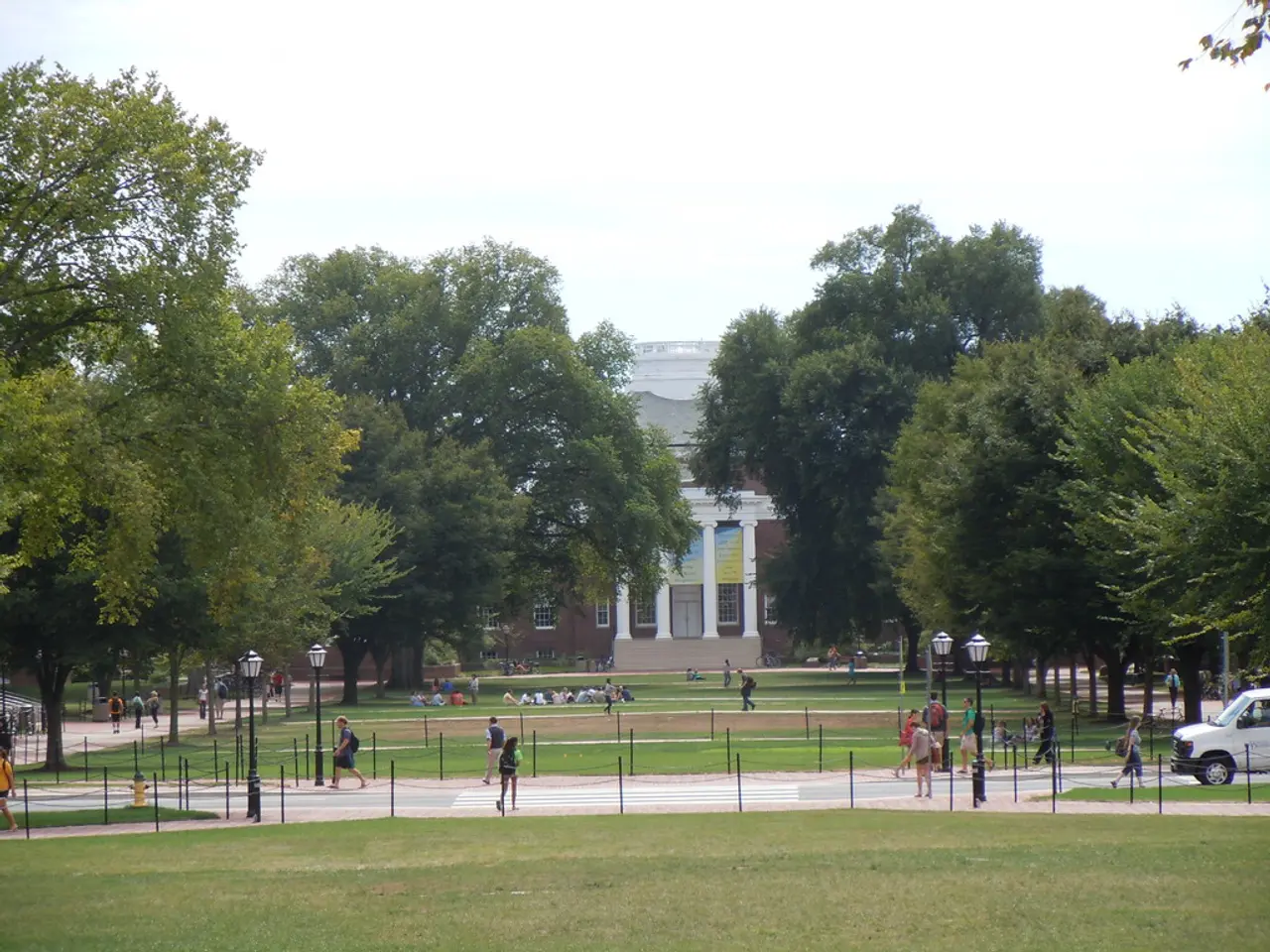Higher Education Institutions Transforming Rural Communities: The Impact of Gandhi and Ambedkar's Meeting
The Unnat Bharat Abhiyan (UBA) program, an initiative connecting higher educational institutions with rural communities, has made significant strides in promoting sustainable and inclusive rural development in India. Through knowledge sharing and capacity building, UBA has improved rural socio-economic conditions, supported local agriculture, and facilitated the implementation of government schemes [2][5].
Key achievements of UBA and related initiatives include:
- Establishing functional partnerships between academia and rural communities to leverage research and innovation for rural development [4].
- Enabling higher education institutions to contribute to rural infrastructure, sustainable economic activities, and social development projects [2].
- Promoting inclusive development through programs that target marginalized communities, such as tribal welfare and infrastructure expansion under allied government schemes [1].
- Driving community awareness campaigns and initiatives addressing critical issues like drug abuse in rural areas, suggesting a broadening of focus beyond economic development [3].
- Facilitating sustainable solutions through planning, architecture, and technology in rural and urban settings via academic and international collaborations [4].
However, challenges remain in fully realizing the program’s potential:
- Ensuring the scalability and sustainability of interventions in diverse rural contexts with varying socio-economic realities.
- Bridging gaps between local needs and academic expertise to ensure practical, context-specific outcomes.
- Addressing infrastructural deficits and the slow pace of rural capacity building despite increased allocations and program outreach [1][5].
- Integrating multiple government schemes and non-governmental efforts for synergistic impacts while avoiding duplication.
To tackle these challenges, several innovative ideas have been proposed:
- Creating a "Gram Sister Fellowship" to focus on women technologists in gender-sensitive projects like sanitation and nutrition, aiming to tackle gender bias in technology adoption [1].
- Shifting to a 5-year Rolling Logic-Model Evaluation using mixed-methods Randomised Control Trials (RCTs) plus ethnography, prioritizing outcomes rather than activities [2].
- Launching an Outcome-Linked Impact Fund using contributions from CSR and District Mineral Foundation to disburse funds on achieving audited social KPIs [2].
- Introducing Community Asset Maintenance Trusts (CAMTs) seeded with project savings and Mahila Self-Help Group earnings, creating a perpetual maintenance corpus and building local stewardship [2].
- Constituting District Rural Innovation Cells (DRICs) to enable convergence across line departments and build trust [2].
- Developing a "Village Knowledge Commons" open-source repository of vernacular how-to videos, democratizing tacit knowledge and promoting social capital [2].
In addition, the All-India Council for Technical Education (AICTE) has mandated a "Village Immersion" stint for engineering undergraduates through Rural Internship Guidelines 2023 [3]. The Pradhan Mantri Janjatiya Unnat Gram Abhiyan (2024) aims for a saturation approach in tribal districts, with technical hand-holding from UBA [3].
Moreover, China's "Targeted Poverty Alleviation" pairs universities with poor counties for technology transfer and market linkages [1]. Brazil's Universidade Rural integrates agro-ecology with community action [1].
However, issues such as caste and gender dynamics can skew project priorities in rural development, with elite capture of Gram Sabhas and patchy women's participation in Participatory Rural Appraisals (PRAs) [2]. Faculty incentives in universities still prioritize journal publications over community impact, making rural work "soft credit" [2].
Overall, UBA’s approach of leveraging institutional knowledge to build inclusive rural development aligns strongly with India’s broader sustainable development goals but requires continued efforts to overcome implementation bottlenecks and deepen ground-level impact [2][4][5]. The UNESCO-IESALC's Higher Education Sustainability Initiative 2030 stresses community-engaged learning as a metric in global university rankings [5]. The MoPR-UBA Framework 2024 allows Higher Education Institutions (HEIs) to co-draft and audit Gram Panchayat Development Plans (GPDPs) [5]. Addressing these challenges and implementing these innovative ideas will be crucial in ensuring the continued success and impact of UBA.
- Under the UBA program, science and technology can be utilized to address critical issues in rural areas, such as the launch of a "Gram Sister Fellowship" focusing on women technologists in sanitation and nutrition projects [1].
- The education-and-self-development sector, particularly higher educational institutions, play a significant role in the mains goal of the UBA program by contributing to rural infrastructure, sustainable economic activities, and social development projects [2].




